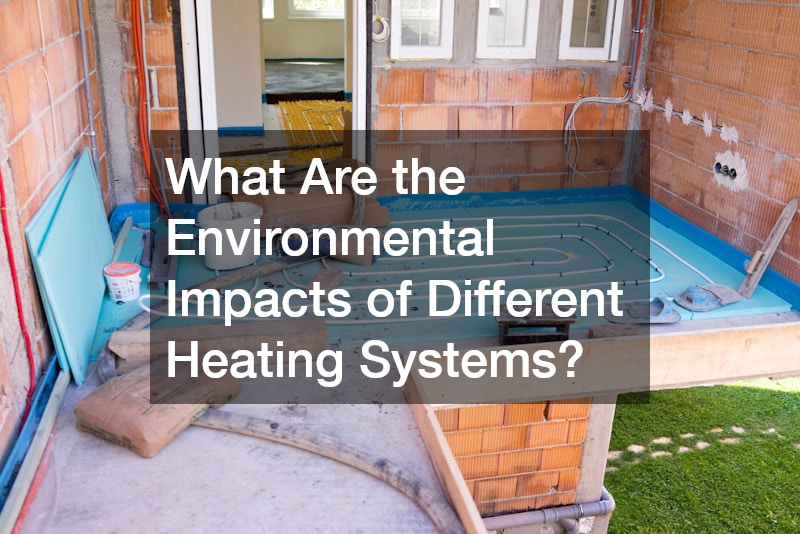Understanding home heating systems is crucial for ensuring comfort and energy efficiency in your home. An efficient heating system not only saves money but also reduces environmental impact, and this article will guide you through the options to make an informed decision.
We will explore the various home heating systems, their maintenance needs, and how to improve energy efficiency. Additionally, we will delve into the environmental impacts of different systems, providing a comprehensive overview.
By the end of this article, you will have a detailed understanding of choosing, maintaining, and optimizing your home heating system. You will also learn about the latest technologies enhancing the efficiency of home heating systems.
1. What Are the Different Types of Home Heating Systems?
1.1 Central Heating Systems
Central heating systems, such as furnaces and boilers, function by heating water or air at one central location and distributing it throughout the home. These systems are generally more efficient for heating large spaces and are a popular choice in colder climates.
The benefits of central heating include consistent heat distribution and the ability to integrate with existing HVAC systems. However, the initial installation cost can be higher compared to other systems.
Proper maintenance can significantly extend the lifespan of central heating systems while ensuring they run at optimal efficiency. This includes regular cleaning and timely repairs of components, such as filters and ductwork.
1.2 Space Heaters and Other Alternatives
Space heaters and ductless systems offer alternative heating solutions, especially in smaller spaces or for supplemental heating. Portable space heaters provide flexibility, allowing you to heat specific areas as needed.
Ductless systems, also known as mini-splits, are gaining popularity due to their ease of installation and efficiency in zoning heating. These systems can be ideal for homes without existing ductwork.
While these alternatives can be energy efficient, their effectiveness depends on the space and usage patterns. It is essential to consider your specific needs when choosing a supplemental heating option.
2. How to Choose the Right Heating System for Your Home?
2.1 Assessing Your Home’s Heating Needs
Choosing the right heating system for your home starts with assessing your heating needs, taking into account factors such as home size, climate, and insulation. Understanding these factors helps in selecting a system that is both effective and efficient.
In colder climates, a more robust central heating system might be necessary, while milder areas can benefit from less intensive solutions. Evaluating your home’s layout and existing infrastructure also plays a crucial role in deciding the type of system to install.
Before making a decision, consider consulting a professional to conduct a thorough assessment. This step ensures that all aspects of your home’s heating needs are adequately addressed.
2.2 Comparing Costs and Efficiency
The cost of installing and operating a home heating system varies significantly across different system types. Central heating systems typically have higher upfront costs but may offer cost savings in the long term due to efficiency and lower operating expenses.
Comparing the efficiency ratings of different systems is crucial. Systems with higher efficiency ratings might be more expensive initially, but they often result in significant energy savings over time.
Ultimately, the right system balances upfront costs with long-term operational efficiency. Investing in energy-efficient systems can also provide environmental benefits by lowering emissions.
3. What Are the Maintenance Needs of Heating Systems?
3.1 Regular Maintenance Practices
Maintaining your heating system is vital for ensuring its longevity and performance. Regular maintenance includes tasks such as cleaning filters, inspecting ductwork, and checking thermostats.
Scheduling annual professional inspections can help catch issues before they become costly repairs. Keeping your system in top shape not only ensures efficiency but also enhances safety in your home.
3.2 Troubleshooting Common Issues
Common issues with heating systems can often be resolved with basic troubleshooting, such as ensuring power supplies are connected and checking thermostatic settings. A lack of heat might be due to something as simple as a faulty thermostat.
Regular checks and quick attention to strange noises or unusual smells can prevent more significant problems. Replacing filters and keeping vents clear are simple tasks that often rectify minor issues.
4. How Can You Improve Energy Efficiency in Home Heating?
4.1 Insulation and Sealing
Improving home insulation and sealing gaps are effective methods to enhance energy efficiency. Well-insulated walls, roofs, and floors help retain heat, reducing the demand on your heating system.
Sealing gaps around windows and doors prevents heat loss, ensuring that warm air is kept inside the home. This simple step can lead to significant reductions in energy usage and costs.
4.2 Smart Thermostats and Automation
Smart thermostats and automation can greatly improve the efficiency of home heating systems by allowing precise temperature control. These devices learn from your heating habits and adjust settings to optimize energy use.
Integrating automation with your heating system means heating can be adjusted remotely or scheduled to match your lifestyle. This reduces wasted energy and can lower heating costs while maximizing comfort.
5. What Are the Environmental Impacts of Different Heating Systems?
5.1 Comparing Carbon Footprints
Different heating systems have varying carbon footprints, depending on their fuel sources and efficiency. Systems using renewable energy, such as geothermal and solar heating, tend to have lower carbon emissions.
Gas and oil-based systems generally produce higher emissions, contributing more to environmental concerns. Choosing systems with lower emissions can significantly reduce your household’s environmental impact.
5.2 Sustainable Alternatives
Exploring sustainable and environmentally friendly heating technologies is crucial for reducing the overall impact of energy use. Options like heat pumps, solar heating, and biomass heating offer greener alternatives.
These systems typically rely on renewable energy sources or enhance efficiency to reduce emissions. They are not only better for the environment but can also offer long-term cost savings.
.

